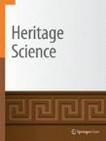 |
H. P. Melo, Sara Valadas, António João Cruz, António Candeias, "Charcoal or black stone? Reconstructions as a tool to study the behaviour of dry underdrawing materials within the paint structure of 16th century panel paintings", Heritage Science, 10, 2022, art.º 23, doi:10.1186/s40494-022-00649-x |
|
⯇ | ⯈
|
| Abstract |
Reconstructions were used as a tool to investigate the use of charcoal and black stone as underdrawing materials in sixteenth century panel paintings with white or off-white preparatory layers. Research was based on the examination of a group of sixteenth century panel paintings by the Portuguese Mannerist painter Francisco João (doc. 1558–1595) and his workshop. Analysis of the original underdrawing material in cross-sections, using microscopic and spectroscopic techniques was not always conclusive. Based on materials thought to be employed by Francisco João and on data collected from sixteenth and seventeenth century European technical treatises along with published analytical studies of panel paintings with white or off-white preparatory layers from this period, reconstructions were performed using charcoal (untreated and oiled–as described in contemporary literature) and natural black stone over different preparatory surfaces. Microscopic analyses of cross-sections from reconstructions were made to assist the discussion of the behaviour of the dry underdrawing media within the paint structure. Results revealed that whereas charcoal could be easily removed if drawn directly over gesso, it would remain fixed when drawn over a ground treated with an oil-based intermediate layer, even when the latter was completely dry to the touch. The persistence of a charcoal drawing when applied over oil challenged the widely disseminated assumption that naturally occurring black stone, which makes a permanent mark, had been employed more frequently than charcoal since the latter appeared to be easily disturbed and hence transitory. The very lengthy curing time for a drying oil could be responsible for fixing the friable media. Reconstructions further showed that oiled charcoal is easily prepared and agreeable to use on any type of surface, where it remains without smudging. Finally, research suggests that the painter’s choice of underdrawing material is closely dependent on the nature of the binder of intermediate layers and on the position of the underdrawing layout within the paint structure. |
| Editora |
URL |
| Ver |
PDF | Material adicional: Apêndice S1, Apêndice S2 |
| |
Academia | Researchgate |
| Importar |
RIS | Endnote |
